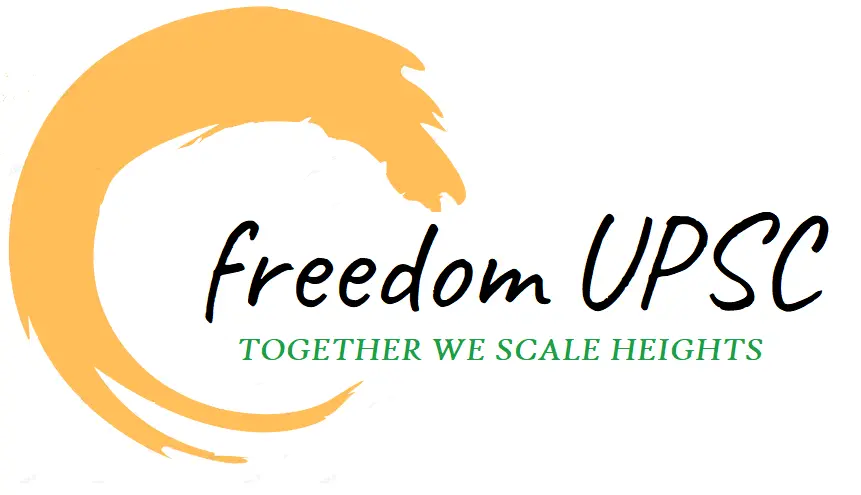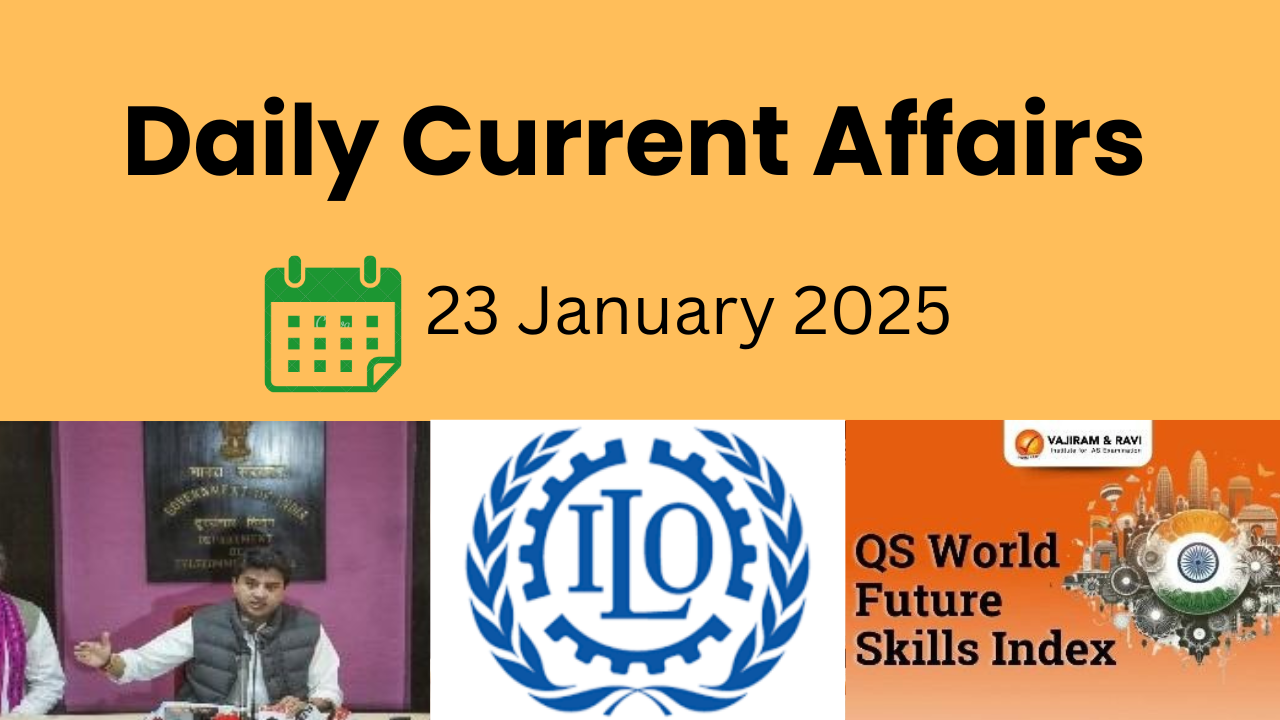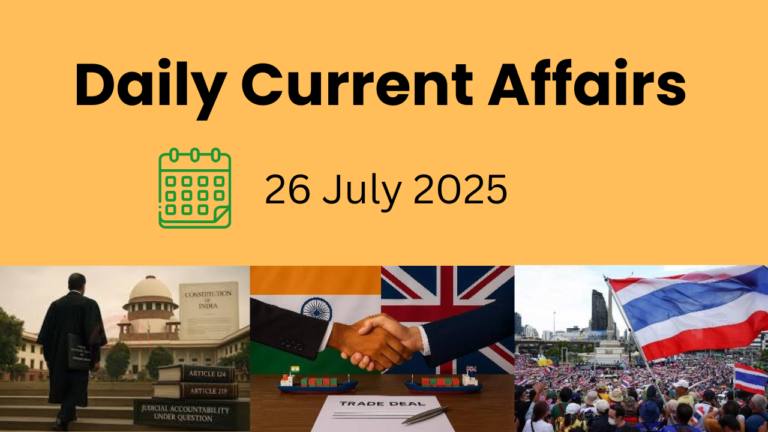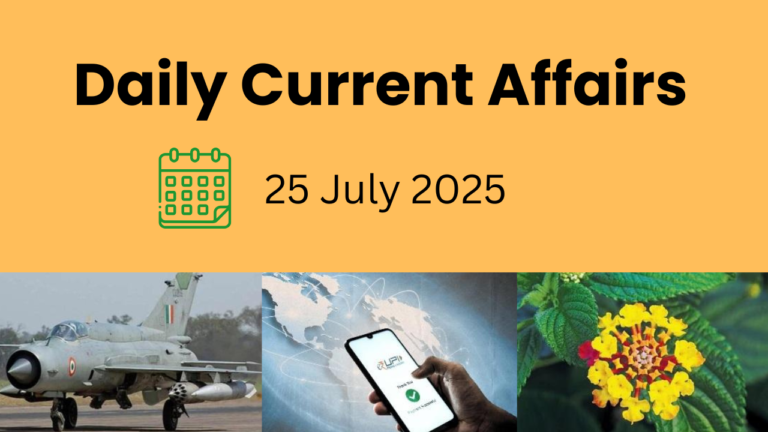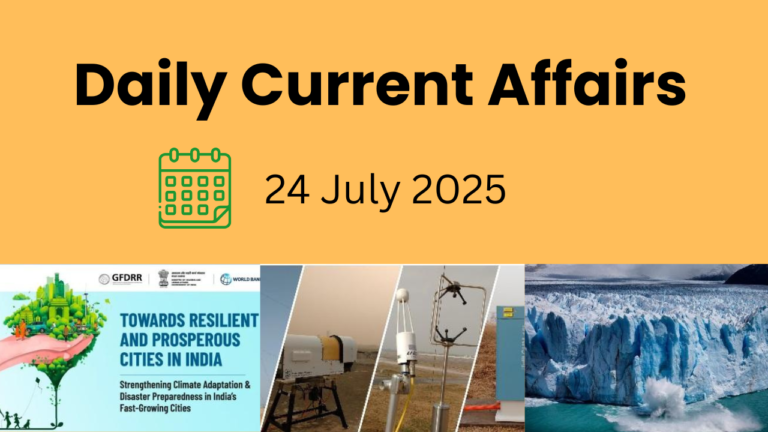1. ILO Report: Global Estimates on International Migrant Workers
Context: The International Labour Organization (ILO) recently released the fourth edition of its Global Estimates on International Migrant Workers. This report highlights the vital contributions and challenges faced by international migrants in the global labor market.
Key Findings of the Report:
Global Economic Contributions:
- International migrants accounted for 4.7% of the global labor force in 2022, amounting to 167.7 million individuals (employed and unemployed).
- This marks an increase of over 30 million since 2013.
Regional Distribution:
- High-income countries host the majority of international migrants, absorbing 68.4% (114 million people). Key sectors include services, particularly the care economy.
- Upper-middle-income countries accounted for 17.4% (29.2 million).
- In regions like Northern, Southern, and Western Europe, migrants formed 23.3% of the labor force, while in Northern America, they constituted 22.6%.
Employment Sectors:
- Services sector: Represents the largest share of migrant employment at 68.4% (compared to non-migrants):
- Women: 80.7%
- Men: 60.8%
- Care economy:
- Migrant women: 28.8%
- Migrant men: 12.4%
- Industry sector: 24.3%
- Agriculture: 7.4% (significantly lower than the 24.3% share for non-migrants).
Age Distribution:
- Prime-age adults (25-54 years): Comprise 74.9% of migrant workers (125.6 million).
- Youth (15-24 years): 9.3% (15.5 million).
- Older workers (55-64 years): 12.5%.
- Above 65 years: 3.4%.
Gender Dynamics:
- Men made up 4.7% of total male employment globally.
- Women represented 4.4% of total female employment.
- The number of women migrants has consistently increased since 2015.
Significance of International Migrants:
- Addressing labor shortages in host countries and contributing significantly through remittances.
- In 2024, India received $129.1 billion in remittances, the highest for any country in a year. These funds support families, boost local economies, and drive national development.
Challenges Highlighted in the Report:
- Growth Rate Decline: The annual growth rate of international migrants fell to less than 1% between 2019 and 2022 due to the COVID-19 pandemic.
- Gender Disparities:
- Higher unemployment for migrant women (8.7%) compared to men (6.2%).
- Employment-to-population ratio:
- Migrant women: 48.1%
- Migrant men: 72.8%
- Contributing factors include language barriers, discrimination, unrecognized qualifications, limited childcare options, and gender-based expectations.
- Unemployment Rates:
- Migrants face a higher unemployment rate (7.2%) compared to non-migrants (5.2%), with women being more affected.
Policy Recommendations:
To optimize the benefits of labor migration, the ILO emphasizes:
- Comprehensive policies to enhance labor mobility and inclusive growth.
- Protecting workers’ rights and ensuring economic well-being.
- Addressing specific needs of migrants, focusing on their safety and dignity.
About the International Labour Organization (ILO):
- Established in 1919 under the Treaty of Versailles.
- Became the first specialized agency of the UN in 1946.
- The only tripartite UN agency, involving governments, employers, and workers.
- Headquarters: Geneva, Switzerland.
- Member States: 187.
Major Reports by ILO:
- World Employment and Social Outlook (WESO)
- Global Wage Report
- World Social Protection Report
- World Employment and Social Outlook for Youth
- World of Work Report
This report underscores the crucial role of migrants in the global labor market and the need for inclusive policies to ensure their equitable integration and contribution.
2. TRAI Adopts Ledger Technology to Combat Spam
Context: The Telecom Regulatory Authority of India (TRAI) is leveraging distributed ledger technology (DLT) to strengthen the fight against spam and enhance customer experience.
Overview:
TRAI plans to tighten regulations to ensure that commercial messages are traceable, thereby addressing the growing concerns of spam messages and calls—unwanted, unsolicited communications often used for advertising, scams, or other malicious activities.
Key Concerns of Spam
- Privacy Invasion: Spam often leads to a breach of personal privacy, exposing sensitive information without consent.
- Scams and Fraud: Many spam messages aim to deceive individuals into sharing sensitive data (e.g., bank details), resulting in financial losses and identity theft.
- Overload and Disruption: The sheer volume of spam causes annoyance, disrupts daily activities, and overwhelms users.
- Regulatory Challenges: Despite existing laws, spammers continuously evolve their tactics, making it hard to enforce regulations effectively.
- Lack of Awareness: Many individuals, particularly in rural areas, lack knowledge of how to block or report spam, leaving them vulnerable to scams.
Spam Regulations in India:
TRAI has implemented several measures to regulate Unsolicited Commercial Communications (UCC):
- DND Registry: Initiated in 2007, this registry allows telecom customers to opt-out of spam calls and messages.
- TCCCPR 2018: Under the Telecom Commercial Communication Customer Preference Regulation (TCCCPR), telemarketers targeting DND-registered customers receive warnings, and repeat offenders can be blacklisted.
- 2024 Mandate: TRAI directed telecom providers to integrate DND reporting into their apps for easier accessibility.
Adopting Distributed Ledger Technology (DLT):
TRAI mandated the use of blockchain technology to combat spam effectively.
- Key Features:
- Maintains a constantly-updated list of approved SMS senders.
- Requires telcos to pre-approve specific message formats.
- Ensures immutability of records, preventing unauthorized tampering.
- Significance:
- Telcos will have a complete record of the source of a message before it reaches the SMS gateway.
- This measure plugs a critical system flaw, preventing unauthorized entities from registering on the blockchain.
Additional Measures to Combat Spam:
- Sanchar Saathi Portal
- Includes a reporting feature called Chakshu, allowing users to report fraudulent calls and messages.
- Collaboration: Partners with law enforcement, banks, and other stakeholders to address spam.
- Suspicious Number Cancellation:
- The Department of Telecommunications (DoT) has canceled lakhs of numbers linked to unauthorized telemarketers and scammers.
- Telecom Security Operations Centre:
- A centralized system in New Delhi to monitor suspicious internet traffic in real-time.
- AI-Powered Spam Identification:
- Telcos like Airtel label suspicious calls as “Suspected Spam”, a practice being adopted by other providers.
- International Call Labelling: Telcos now identify international calls on smartphones.
Benefits of the Initiative:
- Enhanced customer safety and privacy protection.
- Improved traceability and accountability for all commercial messages.
- A significant step toward curbing fraudulent activities and spam overload.
By implementing these stringent measures, TRAI is setting an example globally in tackling the menace of spam while leveraging cutting-edge technology like blockchain for effective regulation.
3. Fast Track Immigration: Trusted Traveller Programme (FTI-TTP)
Context: The Fast Track Immigration – Trusted Traveller Programme (FTI-TTP) is a transformative initiative aimed at simplifying and securing international travel for Indian nationals and Overseas Citizens of India (OCI). The programme aligns with India’s vision for development, offering world-class immigration facilities with advanced technologies.
Why in News?
On January 16, 2025, Union Home Minister Amit Shah inaugurated the FTI-TTP at seven airports:
- Mumbai, Chennai, Kolkata, Bengaluru, Hyderabad, Cochin, and Ahmedabad.
Initially launched seven months ago at Delhi’s IGI Airport, the FTI-TTP aims to provide accelerated immigration pathways, including automated e-gates for quicker screening of international travellers.
Fast Track Immigration – Trusted Traveller Programme (FTI-TTP)
FTI-TTP and ‘Viksit Bharat @2047’ Vision
This programme supports the ‘Viksit Bharat @2047’ agenda, envisioning India as a developed nation by its centenary of independence.
Launch and Objectives:
- First introduced: June 2024 at IGI Airport Terminal 3.
- Goal: To facilitate faster, smoother, and secure immigration for Indian nationals and OCI passengers arriving from abroad.
Key Features of FTI-TTP:
- Free of Cost: Initially offered gratis to Indian citizens and OCI cardholders.
- Enhanced International Mobility: Automates and streamlines immigration processes for better efficiency.
Implementation:
The Bureau of Immigration under the Ministry of Home Affairs oversees the implementation of the programme.
How FTI-TTP Works:
Enrollment Process:
Applicants register online via the official portal: https://ftittp.mha.gov.in.
- Submit necessary details and documents for verification.
- Approved applicants are added to the Trusted Travellers Whitelist for seamless e-gate access.
Biometric Verification:
- Biometric data is collected either at the Foreigners Registration Office (FRRO) or during airport transit.
- Registration is valid until the passport expires or for five years, whichever is earlier.
Immigration Clearance Process:
- Boarding Pass Scan: Registered travellers scan their boarding pass at e-gates.
- Passport Verification: The passport is scanned to confirm identity.
- Biometric Authentication: Traveller’s biometrics are verified at e-gates.
- Automated Clearance: E-gates open upon successful verification, completing the process.
Implementation Phases:
- Phase 1:
- Covers Indian citizens and OCI cardholders.
- Implemented at seven airports, including Mumbai, Chennai, Kolkata, Bengaluru, Hyderabad, Cochin, and Ahmedabad.
- Phase 2:
- Expands to foreign travellers.
- Targets rollout across 21 major airports nationwide.
Global Fast-Track Immigration Programmes:
India joins several countries in adopting fast-track immigration systems to enhance global mobility.
- United States: Global Entry Programme (2008)
- Expedited clearance for pre-approved, low-risk travellers.
- Utilises self-service kiosks for passport and fingerprint scans.
- Requires a detailed background check and in-person interview.
- United Kingdom: Registered Traveller Service (2015)
- Fast-track access for frequent visitors from specific countries.
- Enables use of eGates at major UK airports.
- European Union: Smart Borders Initiative (2016)
- Implements the Entry/Exit System (EES) to pre-register data, including biometrics, for non-EU nationals.
- Enhances security and efficiency for Schengen Area entry.
- Australia: SmartGate System (2007)
- Automated kiosks for verifying identity using passport scans and photographs.
- Initially limited to Australian and New Zealand passport holders but now includes select foreign nationals.
- Saudi Arabia: Smart Travel System (2019)
- e-Gates for faster immigration clearance using biometric verification (facial recognition and fingerprints).
- Expanded under the Vision 2030 initiative to cater to increasing international visitors.
Significance of FTI-TTP
- Faster Immigration: Reduces waiting times for international travellers.
- Enhanced Security: Ensures thorough verification with biometric authentication.
4. India’s Position in the QS World Future Skills Index
Context: India’s ranking in the QS World Future Skills Index highlights its growing potential and challenges in adapting to the rapidly evolving global job market. The country stands out for its strengths in digital readiness and workforce youth but faces hurdles in innovation and skill alignment.
Understanding the QS World Future Skills Index:
The QS World Future Skills Index, developed by Quacquarelli Symonds (QS)—globally recognized for its university rankings—evaluates countries on their readiness to tackle future job market demands.
The index focuses on four key dimensions:
- Skills Fit: How well workforce skills align with market needs.
- Academic Readiness: The ability of educational institutions to prepare graduates for future jobs.
- Future of Work: The adoption of emerging skills and technologies.
- Economic Transformation: The adaptability of economies to thrive in evolving paradigms.
The inaugural QS Future Skills Index 2025 sheds light on how countries are preparing for trends like Artificial Intelligence (AI), green technologies, and digital transformation.
Key Highlights from the QS Index:
- India’s Rank and Category:
- Ranked 25th overall, India is classified as a “contender,” indicating steady progress in future skill preparedness.
- Strengths:
- Future of Work: India scored an impressive 99.1, the second-highest globally, showcasing readiness for digital roles.
- Youth Demographics: A large, young population and a thriving start-up ecosystem provide a strong foundation for economic growth.
- Digital Integration: Alongside Mexico, India ranks among the most prepared nations for integrating talent into digital roles.
- Weaknesses:
- Innovation for the Future: Low scores in sustainability and forward-thinking solutions hinder progress.
- Academia-Industry Misalignment: Significant gaps remain in equipping graduates with skills in AI, green technologies, and digital sectors.
- R&D Investment: India’s R&D spending (0.6% of GDP) is far below the global average of 2.7%.
Challenges in Skill Development:
- Skilled Workforce Gap
- A National Skill Development Corporation (NSDC) report highlights a demand-supply gap of 29 million skilled workers, particularly in sectors like healthcare, AI, semiconductor manufacturing, and green jobs.
- Employability Standards:
- Only 25% of management professionals, 20% of engineers, and 10% of graduates meet employability standards, as per the World Economic Forum.
- The International Labour Organization (ILO) reports that 47% of Indian workers, including 62% of women, are underqualified for their roles.
- Limited Access to Education:
- Many Indian youth, especially in rural areas, struggle to access tertiary education in skills-intensive fields.
Opportunities for Growth:
- Demographic Advantage:
- India’s youthful population positions it to become a global leader in skill-based industries, while other nations face challenges of an aging workforce.
- Policy Initiatives:
- National Education Policy (NEP) 2020: Promotes modular education and reskilling.
- ULLAS (Understanding of Lifelong Learning for All in Society): Aims to make education and training accessible to all regions.
- Technological Integration:
- Leveraging digital learning platforms and AI to align academic curricula with industry needs.
Recommendations for Improvement:
- Align Academia with Industry:
- Universities and training institutions must focus on delivering future-ready skills in AI, green technologies, and digital sectors.
- Boost R&D Investment:
- Increasing R&D funding is crucial to drive innovation and promote sustainable practices.
- Expand Educational Access:
- Address regional disparities in education through flexible learning pathways.
- Foster Collaboration:
- Strong partnerships between government, academia, and the private sector are essential for targeted skill development.
Conclusion:
India’s performance in the QS World Future Skills Index demonstrates significant potential to lead the global job market in emerging skills. While the country excels in digital readiness, its youthful workforce, and start-up ecosystem, addressing challenges in education, sustainability, and innovation is vital.
By closing these gaps, India can achieve sustainable growth and establish itself as a global powerhouse for future-ready skills.
5. Impact of Proposed US Sanctions on Russian Oil and India’s Energy Landscape
Context: The proposed sanctions were announced by Scott Bessent, the US President-elect’s nominee for Treasury Secretary, during a Senate confirmation hearing. The strategy underscores the United States’ intent to tighten pressure on Russia amidst the ongoing Ukraine conflict, with major consequences for global oil prices and trade dynamics.
New Sanctions on Russian Oil:
- Tightened Restrictions:
- On January 10, 2024, the Biden administration introduced new sanctions targeting Russia’s oil sector.
- The incoming administration is likely to further intensify these measures, focusing on Russian oil majors and their global operations.
- Scope of Sanctions:
- Targeted Entities: Companies like Gazprom Neft and Surgutneftegas are directly impacted.
- Vessels Affected: Sanctions extend to 183 tankers in Russia’s “shadow fleet.”
- Service Providers: Restrictions on Russia-based oilfield service providers are included.
- Objective: To sever the revenue streams funding Russia’s military actions.
- Compliance Deadline:
- The US Office of Foreign Assets Control (OFAC) has set a deadline of February 27, 2024, for crude oil deliveries loaded before the sanctions came into effect.
Implications for India and Its Strategic Response:
Impact on India:
- Bilateral Trade Growth: India-Russia trade reached $65.7 billion in 2023-24, reflecting a significant surge.
- Crude Oil Dependency: Russia now accounts for 38% of India’s oil imports, up from negligible levels before the Ukraine conflict.
- Price Cap Dynamics: The $60-per-barrel price cap imposed by G7 nations redirected Russian oil exports to Asian markets, primarily India and China.
- Energy Security Risks: Over 85% of India’s crude oil is imported, making cost-effective and reliable Russian oil critical to its energy strategy.
India’s Response:
- Commitment to Energy Security:
- India has prioritized energy security over geopolitical pressures.
- External Affairs Ministry spokesperson Randhir Jaiswal affirmed that India would continue importing Russian oil based on economic and energy needs.
- Accelerated Payments for Russian Oil:
- Indian refiners are expediting payments to avoid potential US penalties.
- Payments for Gazprom Neft crude are now being processed in Rubles, bypassing the $60-a-barrel price cap introduced in 2022.
Examining Rupee Internationalisation Amid Sanctions:
Challenges in Rupee Trade:
- Efforts to settle India-Russia oil trade in rupees face obstacles, especially as stricter sanctions could hinder negotiations.
- In contrast, Russia-China trade in non-dollar currencies has boosted the yuan’s global presence.
Global Reserve Currency Trends:
- US Dollar Dominance: The US dollar remains the world’s leading reserve currency, but BRICS nations are intensifying efforts to develop alternatives.
- Impact of SWIFT Ban: The US excluded Russia from SWIFT in 2022, accelerating global efforts to explore non-dollar transactions.
US Perspective:
- Scott Bessent emphasized the need to safeguard the dollar’s status as the global reserve currency.
- Former President Trump had previously warned BRICS nations of economic repercussions if they pursued a rival reserve currency.
Conclusion:
India’s strategic engagement with the US and Russia highlights its balanced approach to securing energy needs amidst geopolitical tensions. As one of Russia’s top oil buyers, India continues to prioritize its economic stability and energy security while adapting to the evolving global dynamics.
By maintaining this delicate balance, India aims to navigate international sanctions while ensuring a stable and sustainable energy future.
6. Cabinet Approves Refarming of 687 MHz Spectrum for Mobile Services in India
Context: The recent decision by the Union Cabinet to refarm 687 MHz of spectrum marks a significant step toward meeting India’s growing demand for mobile services and advanced connectivity solutions.
Why in News?
The Union Cabinet has approved the refarming of 687 MHz spectrum, increasing the total available spectrum to 1,587 MHz. Of this, 320 MHz will be released immediately, while the remaining will be released by 2028-29.
- Key Contributors: The refarmed spectrum primarily comes from the Ministry of Defence and ISRO.
- Future Requirements: Union Telecom Minister highlighted that by 2030, mobile services in India will require 2,000 MHz of spectrum, leaving a gap of 1,100 MHz from current availability.
- Purpose: This move aligns with the demand for efficient use of mid-band spectrum (1,000–6,000 MHz), crucial for 4G and 5G connectivity.
Understanding Airwaves/Spectrum:
What are Airwaves?
Airwaves refer to radio frequencies within the electromagnetic spectrum used for wireless communication, including mobile services, broadcasting, and more. The government regulates, manages, and auctions these airwaves to operators.
Types of Spectrum Bands:
- Low-Band Spectrum (<1 GHz):
- Examples: 600 MHz, 700 MHz, 800 MHz, 900 MHz.
- Advantages:
- Wide coverage over long distances.
- Effective for in-building penetration.
- Usage: Ideal for commercial mobile services and broadcasting.
- Mid-Band Spectrum (1 GHz–6 GHz):
- Examples: 1800 MHz, 2100 MHz, 2300 MHz.
- Advantages:
- Balances coverage and data capacity over significant distances.
- Usage: Vital for modern telecom services, including 4G and 5G.
- High-Band Spectrum (24 GHz–40 GHz):
- Also known as the millimeter-wave spectrum.
- Advantages:
- Supports ultra-high-speed networks over short distances.
Challenges:
- Susceptible to interference from dense objects.
Spectrum Needs for Telecom Companies:
- Optimal Range: The 400 MHz–4 GHz range is deemed most suitable for telecom services by the GSM Association.
- Frequency Bands in India:
- 2G: 900 MHz, 1800 MHz.
- 3G: 900 MHz, 2100 MHz.
- 4G: 850 MHz, 1800 MHz, 2300 MHz, 2500 MHz.
- 5G: 700 MHz, 3.5 GHz.
- Key Bands:
- 900 MHz: Widely used for GSM voice calls and 4G broadband services.
- 1800 MHz: Essential for GSM services and a core band for 4G LTE.
Spectrum Refarming:
What is Spectrum Refarming?
Spectrum refarming is the process of reallocating spectrum bands from older technologies (e.g., 2G) to newer, more efficient technologies like 4G or 5G.
- Example: Allocating a portion of the 900 MHz band previously used for 2G services to LTE (4G) for meeting higher data demand.
Why is Refarming Important?
- Efficient Utilization: Ensures better use of the scarce spectrum resource amidst rising demand.
- Network Modernization: Enables service providers to transition from legacy networks to advanced networks.
- Support for Future Technologies: Critical for addressing the growing demand for mobile broadband and 5G services.
Benefits of Spectrum Refarming
- Increased Network Capacity: Accommodates more users and higher data speeds.
- Improved Network Performance: Delivers superior quality of service.
- Cost-Effectiveness: Eliminates the need to purchase additional spectrum for upgrades.
Challenges of Spectrum Refarming:
- Service Continuity: Ensuring uninterrupted services during the transition.
- Device Compatibility: Older devices may not support reallocated spectrum.
- Channel Interference: Avoiding overlaps between new and old frequency bands.
- Contiguous Spectrum: Adequate contiguous blocks are essential for operating multiple technologies.
Coclusion:
The approval of 687 MHz spectrum refarming is a forward-thinking move by the Indian government to bridge the gap between current spectrum availability and future needs. By reallocating spectrum for modern technologies, India is paving the way for enhanced mobile services, efficient 5G deployment, and improved connectivity for its citizens.
While challenges remain in terms of service continuity and device compatibility, the benefits of refarming, including increased capacity and network performance, are significant for India’s telecom sector as it gears up for a data-driven future.
